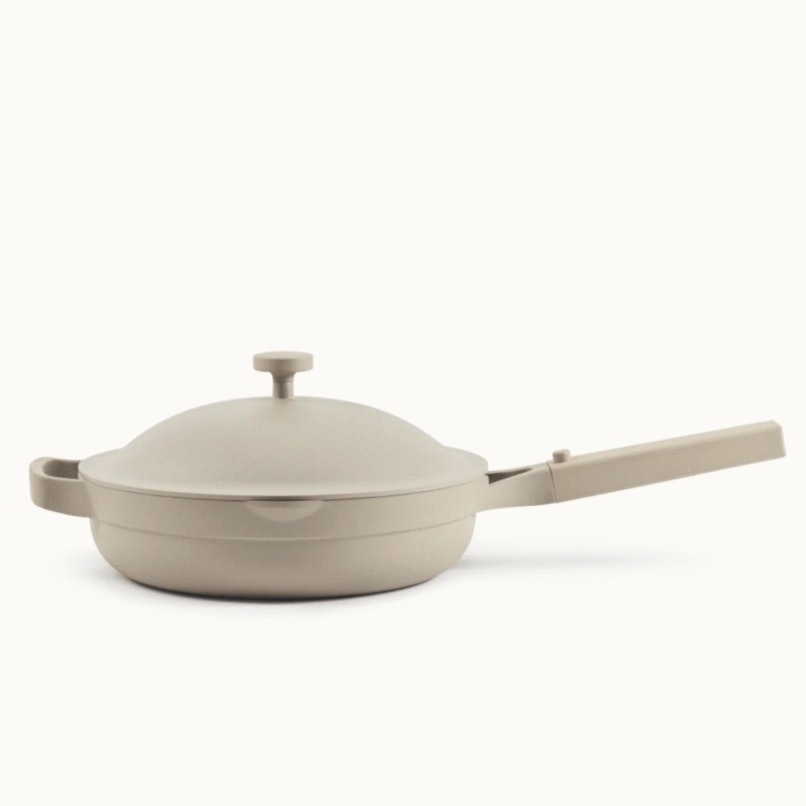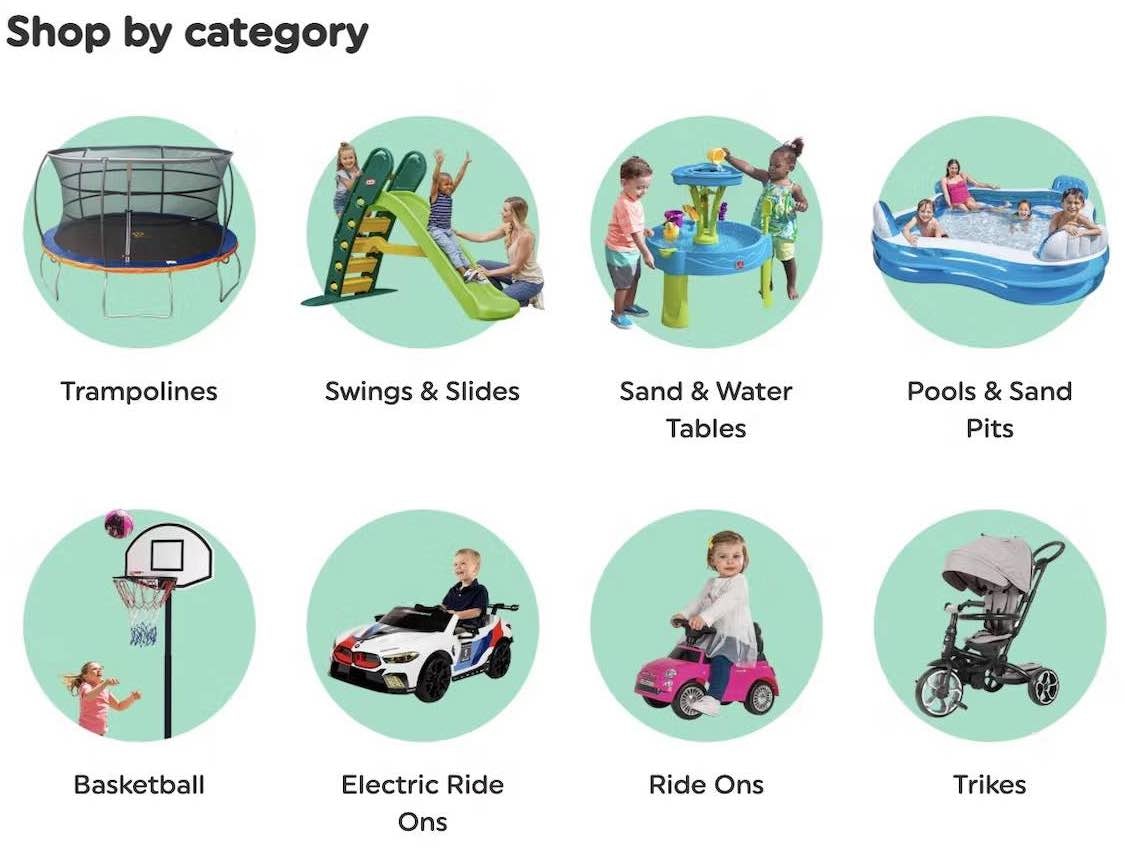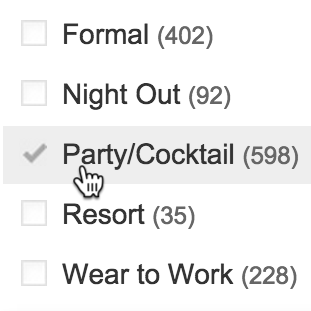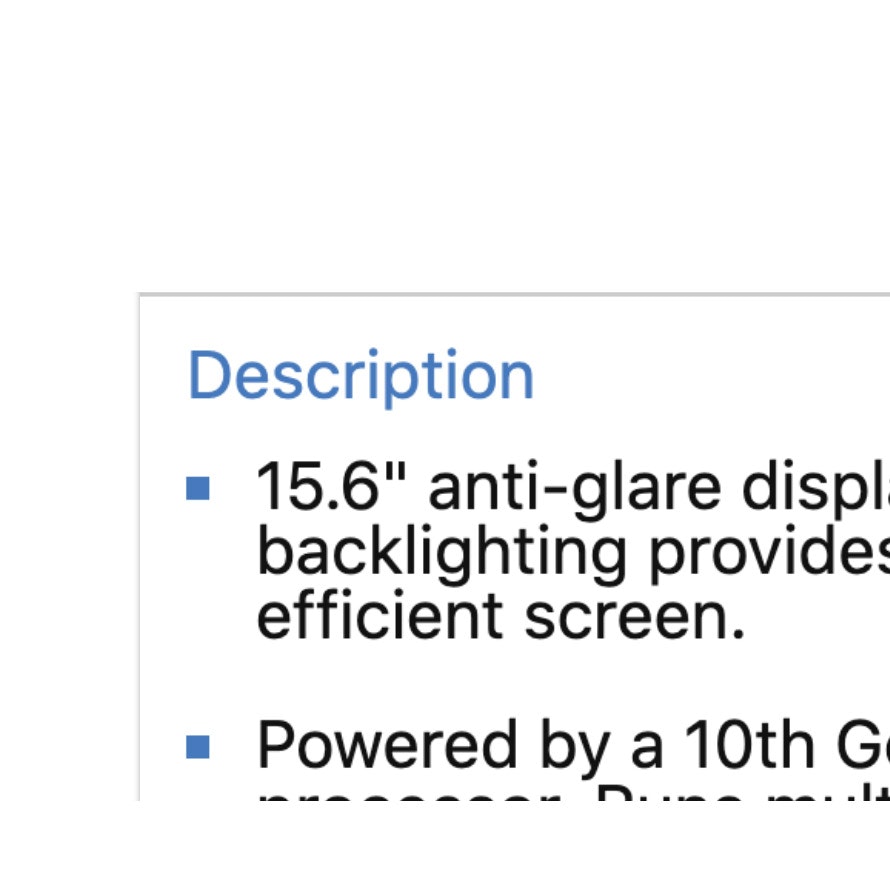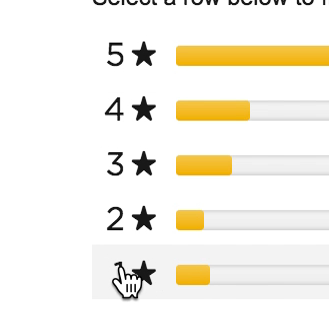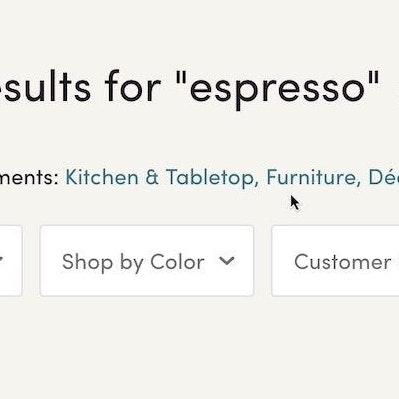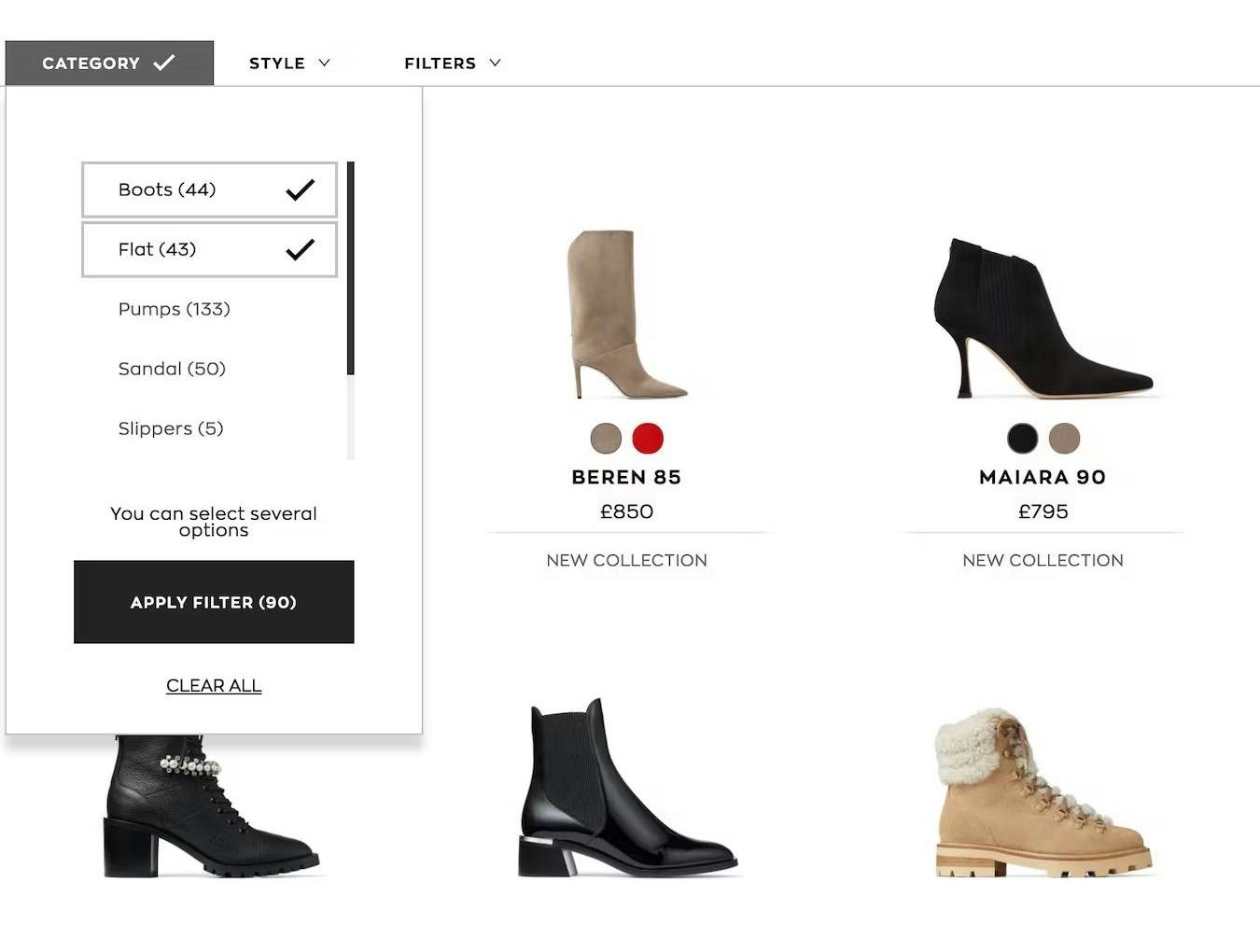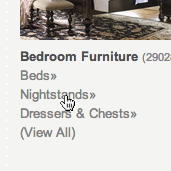Key Takeaways
- 100% of test participants primarily relied on the main navigation and manual product browsing on apparel and accessories sites
- Search is used as a fallback strategy by only a small subgroup of users (10% in testing), when the main navigation or browsing fails
- Apparel and accessories sites should prioritize investing in category navigation and curated paths over on-site search
Video Summary
In Baymard’s large-scale UX testing of Apparel & Accessories, we observed that participants embarking on product finding primarily relied on the main navigation and other product-browsing methods — instead of on search.
Indeed, even though participants in the study were focused on finding products, only 10% of participants used search at least once during their hour-long test session, and — importantly — only did so after their primary strategy of browsing for products had failed.
Moreover, unlike sites that sell hundreds or thousands of products with many alternatives and variations — where search is often many users’ main product-finding strategy — apparel and accessories sites tend to have flatter hierarchies and fewer products, leading the vast majority of users to prefer using the main navigation — and to a lesser extent the homepage — to find products.
Therefore, to help users in their product-browsing process, apparel and accessories sites should prioritize allocating resources to category navigation and curated paths over on-site search.
This article will discuss our latest Premium research findings on prioritizing category navigation and curated paths over on-site search for apparel and accessories sites:
-
Why the main navigation is how apparel and accessories users prefer to browse
-
How failures in other areas of the site lead some users to use search as a fallback strategy
Why the Main Navigation Is How Apparel and Accessories Users Prefer to Browse
“Okay, so I would just go down into the “Men’s” and see if I can “Shop by Sport”, and I see that there’s a “Hiking & Outdoors”! So that’s really nice! Kind of promising to see that.” A participant at Adidas looking for hiking clothes was pleased that he could clearly identify a “Shop by Sport” subcategory in the main navigation (first image), allowing him to easily select a “Hiking & Outdoor” sub-subcategory pertinent to his needs (second image).
“Oh! They have a ‘Jewelry Under $200’ category!…That’s quite interesting, I’ve never seen that particular category before…So I think I will look at that.” The well thought-out navigation at Catbird made it easy for budget-conscious jewelry shoppers, such as this participant, to rapidly identify a pertinent path to explore.
Despite 100% of our apparel and accessories test sites offering an on-site search tool, 90% of test participants did not use it at any of the tested sites.
This is in spite of the fact that each participant tested on average just over 7 sites, with their primary goal being to find apparel products at each site that suited their needs (with no guidance given on how participants should go about finding products of interest once they were on the site).
In fact, the initial product-finding behavior of 100% of test participants was to principally use the main navigation and to a smaller degree the homepage as the launchpad to browse the product catalog.
These findings were initially surprising to us; after all, search is typically assumed to be a primary way users will go about finding products on a site.
Indeed, this is a key difference compared to general e-commerce site user behavior (e.g., on sites like Amazon, Walmart, Best Buy, etc.), where our research has found a roughly 50-50 split between users who prefer to search vs. users who prefer to use the main navigation to find products.
However, on closer consideration, the flattened category taxonomy and smaller product catalog of apparel and accessories sites supports that the vast majority of users will regard the product-browsing process on apparel and accessories sites as more approachable and easier to manage, leading them to feel more willing to explore using the main navigation or homepage.
For example, a user interested in finding a skirt on a site will, if the site has a well-organized hierarchy, only need to navigate a couple of layers to find the product list she’s interested in (e.g., “Women’s > Skirts and Dresses”).
Furthermore, many apparel and accessories sites are able to make all categories and subcategories easily accessible in the main navigation, in breadcrumbs, or through the homepage — placing the paths users need at their fingertips.
Thus, apparel and accessories users, when considering the much-more-approachable navigation of apparel and accessories sites, immediately turn to the main navigation to find product lists of interest — and will only consider search when “forced to” by underperforming main navigations, intermediary category pages, homepages, or product pages.
Note that this finding for apparel and accessories sites dovetails with our findings for search on direct-to-consumer sites.
How Failures in Other Areas of the Site Lead a Small Subset of Users to Use Search as a Fallback Strategy
“I’m going to buy jewelry for my brother-in-law, because he’s pretty cool to me.” At All Saints, a participant was unable to quickly determine whether the Men’s “Accessories” category contained jewelry (first image) — resorting instead to using search (second image). Without any indication of the underlying hierarchy of main navigation categories, users such as this one may resort to using search.
On apparel and accessories sites, if users are using search there’s likely a more critical navigation or category taxonomy issue that needs to be fixed.
Otherwise, investing heavily in a search feature is only treating the symptom, not the actual problem, faced by users.
When users turn to search, it often points to a crucial issue with navigation or category taxonomy that first needs to be resolved.
For instance, several sites in testing didn’t indicate the underlying hierarchy for main navigation paths — causing confusion as users were unable to navigate to their category of choice.
(For more on how to improve main navigation UX, see our articles on improving navigation UX.)
At Express, a participant who had added a floral top to her cart (first image) was unable to quickly determine from the product page whether the matching floral skirt worn by the “Human Model” was also available (second image). She turned to search to try to find the item (third image): “I’m going to go up & click [type] “Endless rose” and see if I can find the skirt too because I like that set.” Instead, sites should provide easier access on the product page to clothing depicted in “Human Model” images.
A small subset of users may also turn to search when paths to individual products are lacking, reasoning that search may be more efficient than carefully looking through product listings or product details pages.
In these cases, search is again a fallback strategy when information on product list items or product page descriptions are unclear or incomplete.
“So ‘28” inseam’, see if this works. And again, sometimes these pull up right, and sometimes they don’t.” At Levi’s, a participant who had entered a “28” inseam” search term (first image) was unable to use the results because they all showed only men’s jeans, whereas she was looking for women’s jeans (second image): ”So see, now I’m getting men’s ones. I don’t want men’s jeans! Yeah, that is not useful.” Providing basic category scope suggestions for her query — such as “28” inseam in Women’s” and “28” inseam in Men’s” — would have ensured that this participant didn’t abandon her search.
Similarly, the same participant as above looking for a skirt at Express twice entered search terms that exactly matched part of the product name of the matching top (“Endless Rose Floral Pleated Bubbled Top”) (first and second images), but the pages of results didn’t yield the right skirt (third image): ”Hmm, I thought this would be easier but it seems that it’s not” (a failure of “Exact Search”).
Moreover, during testing, when search was available it tended to underperform in the few instances it was used.
While users may be drawn to search on larger sites that are likely to appropriately invest in a robust and fully featured search tool, prior experience with poor quality or unoptimized search on other small apparel retailers may dissuade users from relying on search for product finding.
Indeed, using search as a last resort when navigating or browsing has failed — only to be disappointed with no or low-quality results — may be a worse overall experience than if search is not offered at all.
The product-finding issue thus compounds for users: they’ve had difficulty finding a product list using their preferred methods, turn to search as a last resort, then “learn” that apparel and accessories search often doesn’t meet their needs — leading them to avoid search at the next apparel and accessories site they visit.
(For more on how to improve search UX, see our list of search articles.)
Apparel and Accessories Sites Should Prioritize Investment in Category Navigation and Curated Paths
Hush Puppies sells fewer than 20 products on its site yet still maintains an on-site search tool, which may be beneficial for navigating the site’s auxiliary content and nonproduct information. Most apparel and accessories sites can expect a better return on investment by prioritizing areas of the site other than search.
Finally, this is not to say apparel and accessories sites should never offer a conventional sitewide search tool.
Indeed, for a potential small subset of visitors, such a feature may be beneficial and even valuable, depending on the site’s content as well as user demographics and preferences.
And, as described above, search is often a fallback option — a product-finding method of last resort — for apparel and accessories users, and a high-performing search feature can help users get back on track with finding products of interest.
In an ideal world, there would be sufficient resources to have optimized Main Navigation, Product Page, and Homepage UX — and to have optimized Search UX as well.
However, many apparel and accessories sites must instead operate with limited design and development resources, and must make choices about how to allocate those resources.
Therefore, given the low usage rates observed in testing, most apparel and accessories sites should prioritize investing in a clear navigation structure and more universally impactful site navigation features.
Additionally, other site features, such as bespoke imagery, detailed product descriptions, and well-implemented user reviews, should also be optimized first over having a perfect search experience.
After such site tools and elements have been effectively optimized, sites may consider supporting on-site search more extensively as an additional benefit.
Getting access: all 500+ Apparel & Accessories UX guidelines are available today via Baymard Premium access. (If you already have an account open the Apparel & Accessories study.)
If you want to know how your apparel or accessories desktop site, mobile site, or app performs and compares, then learn more about getting Baymard to conduct an Apparel & Accessories UX Audit of your site or app.
















